The following is an excerpt from my new book, Europe on 5 Wrong Turns a Day.
Nineteen seventy-two. The Continent was open; the tourists were everywhere. The U. S. economy was faltering, but even this was not enough to dissuade the masses from heading abroad, although it did mean that Arthur Frommer was finally forced to adjust his titular budget for the first time, to Europe on $5 and $10 a Day.
The previous decade had been good to Frommer. He'd sold a lot of books, branched out to other areas of the travel industry and become something of a pop culture phenomenon. By 1963 he was selling 150,000 copies of Europe on $5 a Day (E5D) annually; four years later, sales were up to 200,000, though this figure understates his true influence, because many people were lending the books to friends. Five thousand readers were writing to Frommer each year with feedback and tips of their own.
"This year 350,000 Americans -- one out of five who travel to Europe -- will go with Arthur Frommer," observed Nora Ephron in a 1967 New York Times profile. "They will eat with Arthur Frommer and, as something of a witticism has it, sleep with Arthur Frommer."
E5D was the bestselling travel guide in print.
Even travel writer Temple Fielding had to concede that Frommer was on to something. Mind you, he wouldn't say so on the record. In 1968, John McPhee wrote a sprawling profile of Fielding for the New Yorker, in which there is just one mention of his budget-minded competitor; it read, in its entirety: "Fielding does not think much of Arthur Frommer's Europe on $5 a Day. 'We don't respect Frommer,' he told me in an even, sad voice." Curiously, McPhee didn't push him on this, and he even opened his profile by stating that Fielding's competitors were still "scarcely visible behind him" -- though, in truth, the numbers and the zeitgeist said otherwise.
Fielding's actions betrayed his unspoken concerns -- in 1967, he released a new book called Fielding's Super-Economy Guide to Europe. I found a 1968 edition, the back cover of which says, "Let's face it -- it's not realistic to expect to travel in Europe on a budget of only five dollars a day any more." Temple Fielding was on the defensive, falling behind the upstart competitor.
But a surprising obstacle had come into Frommer's -- and tourism's -- way: the U. S. government, the very entity that had helped promote mass tourism in the first place as a component of the Marshall Plan. The government's new message was "See America first." On New Year's Day 1968, with the U. S. economy in decline, President Johnson proposed significant new taxes on tourist expenditures overseas and called for Americans to cut back on journeys abroad. The nation's economic woes, the Johnson administration asserted, were in large part due to American tourists spending billions of dollars overseas; the nation's "balance of payments" was askew. Johnson established a Commission on the U. S. Balance of Payments and recruited Frommer to serve on it, a tacit acknowledgment of the guidebook guru's key role in creating the tourist boom.
Johnson's efforts, like Fielding's, were too little, too late. The momentum of tourism was unstoppable; the pursuit of the American Dream now led clearly across the Atlantic. In fact, Christopher Endy notes in Cold War Holidays that many pundits (on both the right and the left of the political spectrum) viewed Johnson's appeal as an enticement to travel, a way to defy an embattled president in the midst of an unpopular war in Vietnam. Some equated Johnson's entreaty with Communist travel restrictions, labeling it antiegalitarian, un-American. On balance, Endy says, Johnson's effort was doomed from the start, and in 1969 tourist spending in western Europe topped the billion-dollar mark for the first time.
Richard Nixon, ever the opportunist, spoke out against Johnson's travel stance on the campaign trail in 1968, defending tourism as a middle-class American right. When elected, though, Nixon was forced to deal with the continued economic decline, and in 1971 he devalued the dollar -- which, in turn, created higher prices for Americans abroad. Nixon had inadvertently succeeded where Johnson had failed, tightening the financial reins on American travelers.
But restlessness is perhaps the most enduring of human traits.
Americans didn't stay home, they just made sure that they spent less when they went abroad -- and thanks to Frommer, they had the template for doing so. Airlines, too, encouraged travel by slashing prices, thanks in part to the 1970 debut of the first jumbo jet, the Boeing 747-100, a wide-body airplane more than twice as large as its predecessor, the 707, and able to carry more than 450 passengers. Students in particular kept traveling in droves. With job prospects drying up, "rather than spend the summer idle, they are using the meager savings they had hoped would eventually finance a future trip to travel now," wrote Paul Goldberger -- a Yale undergrad who had toured Europe twice and is today the architecture critic for the New Yorker -- in the New York Times in June 1971. He added that "[a]n estimated record of 750,000" students were heading to the Continent that summer, following Frommer's lead.
Arthur Frommer essentially initiated "if not the Junior Year abroad then certainly the drop-out one," Stanley Elkin wrote in a 1972 profile for Harper's. "Indeed, in a way, he invented abroad itself."
Elkin's kicker: "It's no accident that Arthur Frommer, the Pill and the credit card are simultaneous phenomena. Everybody deserves everything. You only live once. Screwing for everybody and Europe for everybody too. This is the egalitarian key to a proper understanding of Europe on Five Dollars a Day."
Reprinted from Europe of 5 Wrong Turns a Day by Doug Mack by arrangement with Perigee, a member of Penguin Group (USA) Inc., Copyright (c) 2012 by Doug Mack.